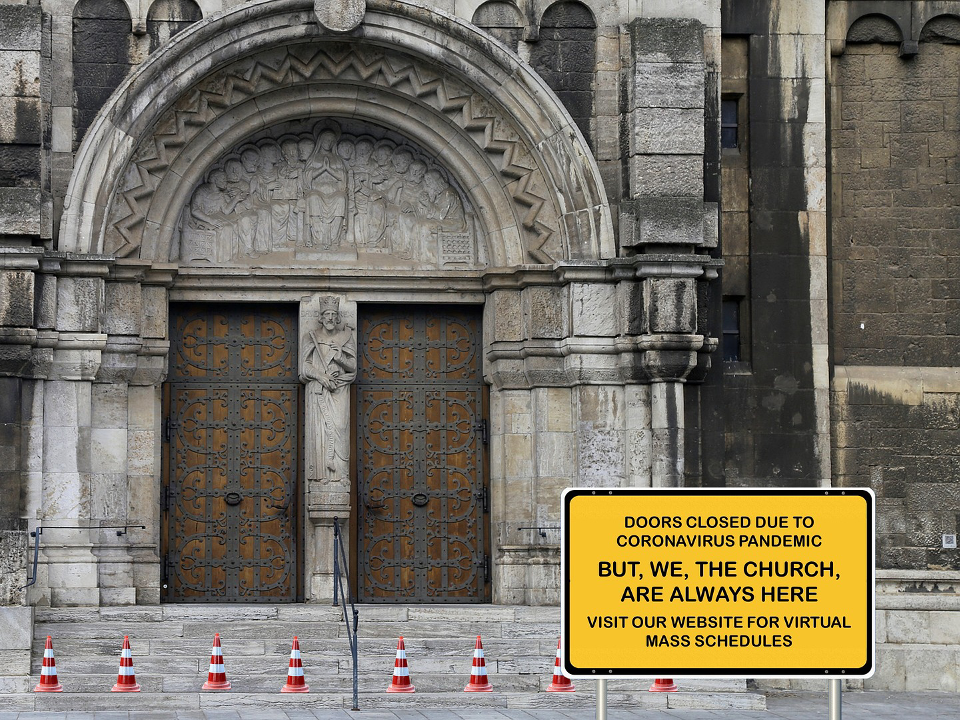Pew Research Center: How COVID-19 Restrictions Affected Religious Groups Around the World in 2020

Come hanno influito le restrizioni introdotte dagli Stati nel 2020 per arginare la pandemia da coronavirus sulle religioni?
Ecco i risultati di una recente indagine di Pew Research Center.
How COVID-19 Restrictions Affected Religious Groups Around the World in 2020
Nearly a quarter of countries used force to prevent religious gatherings during the pandemic; other government restrictions and social hostilities related to religion remained fairly stable
In 2020, the year the COVID-19 pandemic took hold globally, many countries banned or limited public gatherings to slow its spread. This report – Pew Research Center’s 13th annual study of restrictions on religion around the world – focuses on how the lockdowns and other public health measures affected religious groups, and how they responded. Among the key findings:
- Authorities in nearly a quarter of all the countries and territories studied (46 out of 198, or 23%) used physical means, such as arrests and prison sentences, to enforce coronavirus-related restrictions on worship services and other religious gatherings.
- Religious groups filed lawsuits or spoke out against the public health measures in 54 of the 198 countries (27%). A common complaint was that some churches, mosques, synagogues and other houses of worship were treated unequally – either by comparison with secular gathering places, like shops and restaurants, or by comparison with other religious groups.
- In 69 countries and territories (35%), one or more religious groups defied public health rules related to the COVID-19 pandemic.
- In an even larger number of countries (94, or 47%), religious leaders or groups promoted public health measures to slow the spread of the coronavirus by encouraging followers to worship at home, observe social distancing or take other precautions, such as hand-washing and mask-wearing.
- News articles and other information sources identified 55 countries (28%) where government officials and religious groups collaborated on efforts to stem the pandemic. In some countries, different religious groups both defied and promoted lockdowns or other public health restrictions.
Meanwhile, other kinds of restrictions on religious belief and practice remained fairly stable at the global level in 2020. The median score on Pew Research Center’s 10-point Government Restrictions Index (GRI), which measures laws, policies and actions by government officials toward religious groups, fell slightly from 2.9 in 2019 to 2.8 in 2020. The median score on the 10-point Social Hostilities Index (SHI), which captures hostile acts against religious groups by private individuals and organizations, rose by a similar margin, from 1.7 in 2019 to 1.8 in 2020.
This report first summarizes the data on pandemic-related restrictions on religious activity, with specific examples from many countries. Then it describes the findings of the 13th annual study of overall restrictions on religion around the world, including changes in the index scores at the global and regional levels.
In more than a third of the 198 countries and territories analyzed, religious groups were subjected to various types of force or blame related to the coronavirus outbreak in 2020. In 74 countries (37% of all analyzed), the study identified at least one of the following: (1) governments used forceto impose limits on religious gatherings; (2) governments, private groups or individuals publicly blamed religious groups for the spread of the coronavirus; or (3) private actors engaged in violence or vandalism against religious groups, linking them to the spread of COVID-19.
These incidents were spread fairly evenly around the world, including in 12 countries in the Americas (34% of countries in the region), 20 countries in the Asia-Pacific region (40%), 20 countries in Europe (44%), seven countries in the Middle East-North Africa region (35%) and 15 countries in sub-Saharan Africa (31%).

